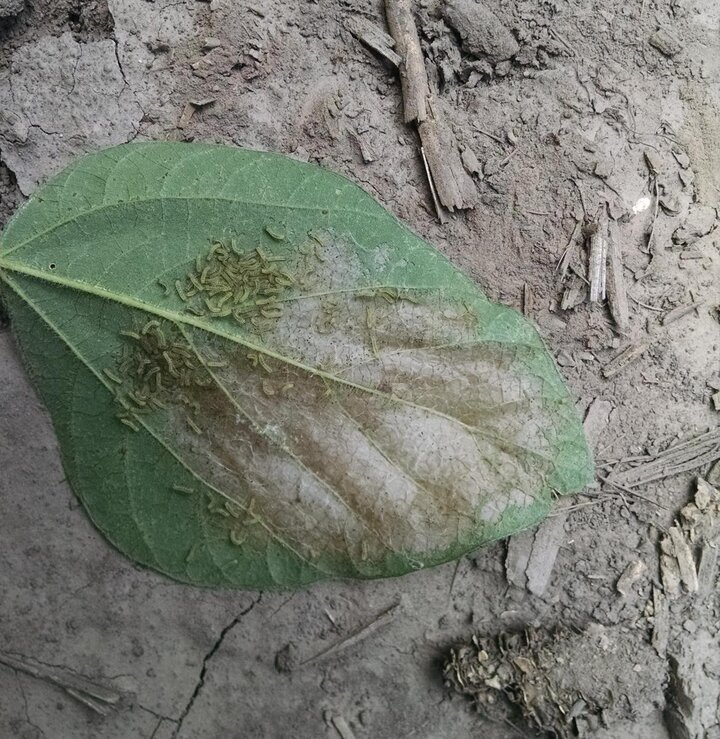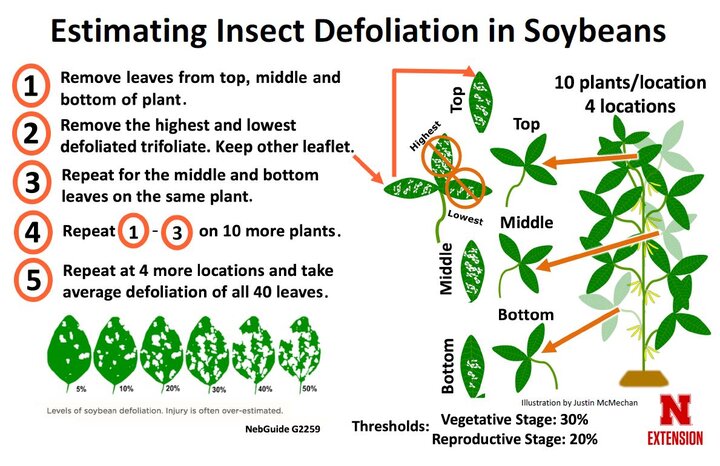Several insects have been observed feeding on leaves in soybean fields recently, including thistle caterpillars, yellow woollybear caterpillars, Japanese beetle adults, and grasshoppers.
Yellow woolly bear caterpillars hatch from an egg mass, and initial feeding damage results in surface leaf tissue being scraped away, producing a window pane appearance (Figure 1). As caterpillars grow larger, they disperse to other leaves on the plant. Thistle caterpillars emerge from a single egg laid by the painted lady butterfly and web together leaflets to produce a feeding “nest.”
Make treatment decisions for these insects based on levels of defoliation observed. In reproductive soybeans, treatment is recommended if defoliation levels exceed 20% and insects are present. Several of these insects tend to feed in the upper canopy. Be sure to make treatment decisions based on overall defoliation throughout the canopy, not just that seen in the upper canopy.
The chart (below) by Justin McMechan illustrates a recommended sampling procedure to estimate defoliation.
For more information see NebGuide G2259, Managing Soybean Defoliators.
If insecticide use is warranted, see the 2018 Nebraska Extension Guide for Weed, Disease, and Insect Management in Nebraska for a list of insecticides labeled in soybeans, rates, restrictions and labeled pests.



